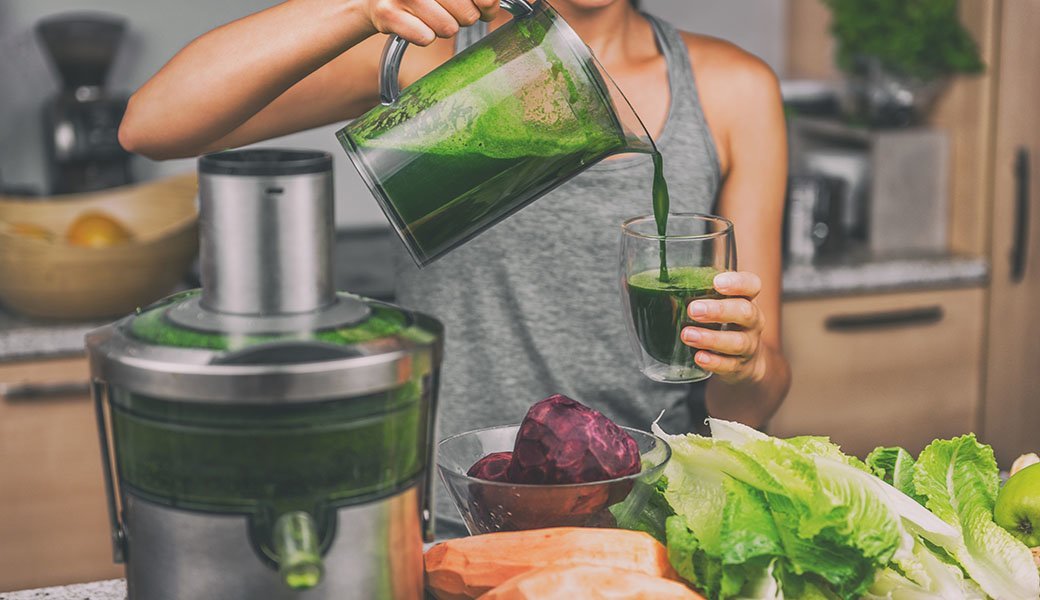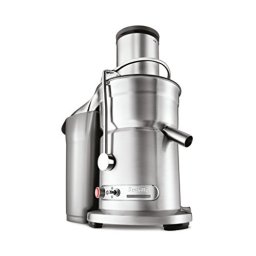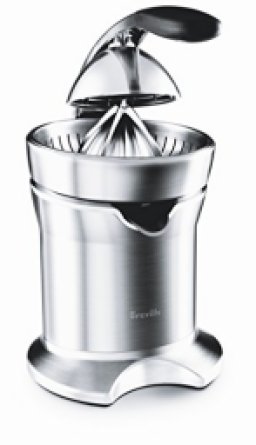Buying guide for best Breville juicers
Apple and mango, carrot and ginger, or plain old OJ: there's no limit to flavor combos when you make your own fresh juice. Whether you're juicing for health benefits or just for love of the fresh flavor, a juicer is a fantastic and reliable kitchen appliance.
You've settled on a Breville juicer, perhaps because Breville is a high-quality brand that garners top-notch reviews. But which model should you select? At any given time, you'll usually find around nine Breville juicers to choose from, so that means you’re facing a bit of a choice. Of course, you want to pick the right one to fit your requirements. A comprehensive buying guide for the best Breville juicers is a great place to start.
Key considerations when selecting a Breville juicer machine include the amount of juice you can make at once, how easy the machine is to clean up after making fresh juice, and how much you should expect to pay for the appliance. It’s worth it to spend a bit of time reading out the types of juicers Breville offers so you know you’re putting your money in the right place.
Why buy a juicer?
At the supermarket, you are likely to find a selection of basic juices: orange juice, apple juice, and perhaps pineapple juice or other local favorites. But with your own juicer at home, you can choose to make any flavor (or flavor combination) you wish.
Choice is not the only reason people decide to buy a juicer. Here’s a look at three primary advantages:
You can save money.
Although a high-quality juicer may cost a significant amount upfront, if you use it, you will “pay yourself back” over time. Purchasing a few oranges and apples and perhaps a bit of ginger at the grocery store is far cheaper than buying a carton of pre-made juice with the same ingredients. You’re doing the labor yourself, of course, but you’re also reusing your own containers (a green bonus) and reaping the health benefits of fresh juice.
Fresh juice is good for you.
Supermarket juice may contain added sugar or other ingredients you don’t want or need. It may have been sitting in the refrigerator case for a while, too. With a juicer, you control the recipe, including the quantity you make and the storage method. Thus, you have more control over what you put into your body.
You choose your flavors.
Maybe you have a hankering for a glass of beet and blueberry juice. Maybe you prefer a freshly juiced orange paired with a dash of pulverized lemon. And don’t forget the veggies! Some of the best vegetables to juice are carrots, kale, and cabbage – three extremely healthy additions to your diet you might not otherwise consume. The point is, you choose your flavors and because you’re choosing them, you’re more likely to consume them.
If you’re shopping from home, be sure to check out Amazon’s bounty of Breville juicers, which you can order to be delivered to your door without having to go out.
STAFF
BestReviews
Types of Breville juicers
Juice fountains
Juicers belonging to Breville's Juice Fountain range are centrifugal juicer machines. These types of juicers extract juice by chopping and spinning food very quickly in a central chamber. The juice is separated from the pulp and channeled out of the spout, while the pulp is collected in a separate container.
Juice Fountains produce juice quickly, and most allow you to introduce whole fruits through the feed chute. However, they're not great at juicing leafy greens and some soft fruits. You can find a range of different Juice Fountain models, including compact juicers and those that use cold juicing technology.
Big Squeeze slow juicers
If you're in the market for a masticating juicer, also called a cold press juicer, check out Breville's line of Big Squeeze juicers. These slow juicers press the juice out of fruit at a significantly reduced speed compared to their centrifugal counterparts. Proponents claim that this process retains more nutrients and gives the juice a better flavor.
We love how quiet these slow juicers are, and the fresh juice has an excellent flavor. They're also great for juicing wheatgrass and other leafy greens. On the downside, they're more expensive and aren't great for people in a rush.
Citrus presses
Breville also makes motorized citrus presses that are designed for juicing oranges, grapefruits, lemons, and other citrus fruits. They're not as versatile as other juicer machines, but if you're completely sure you only want to juice citruses, keep in mind that a Breville citrus press does this quickly and effectively — no need to peel your fruit first.
DID YOU KNOW?
As tempting as it may be, do not skip the appliance clean-up when you’re done juicing. Without regular and thorough cleaning, the bits of pulp and skin that get trapped in the crevices of the juicer would quickly become a breeding ground for bacteria.
STAFF
BestReviews
Key considerations when choosing a Breville juicer
Juicing speed
How quickly does your chosen Breville juicer produce a glass of juice? A centrifugal juicer will produce fresh juice at high speed, so your juice should be ready to drink in a minute or so. Masticating juicers, such as those in the Big Squeeze range, are slow juicers, taking a few minutes to extract enough juice for a large glass.
Juicing speed doesn't matter to everyone, but if it matters to you, one of Breville's Juice Fountains would be your best bet.
Motor size
As a rule, the larger the motor, the more powerful the juicer, and the quicker and more effectively it will extract juice. So, a 1,000-watt juicer is more powerful than a 700-watt model.
However, you also need to look at juicer type. You can't realistically compare the motor sizes of centrifugal juicers and masticating juicers to one another since the way that masticating juicers work doesn't require such a powerful motor.
The power offering of a Breville juicer may be on the lower side, around 700 watts, or on the higher side, around 1,000 watts.
Size
Some Breville juicer machines have quite a large footprint, which can be an issue for people without much counter space. You can find more compact models with smaller footprints, but sometimes, these machines are taller to make up for it. This could be a problem if you have wall cupboards overhanging your counter, as you might not have enough headroom to use a tall juicer effectively.
Ease of cleaning
One of the great features of Breville juicers is that they tend to be easy to clean up after use. The majority are dishwasher safe (all the parts that need cleaning, that is) and/or have a quick rinse function to rinse off the juicer between uses. This is a huge benefit when you're making a range of different juices at the same time, as you can rinse the juicer to prevent the flavor of your last batch from tainting the next one.
If your juicer comes with a food plunger or similar item meant to push the food into the chute, use it, and don’t use anything else. These plungers are specially designed to work with your particular juicer model. Substituting for the plunger with a spoon or another kitchen item could damage your juicer.
STAFF
BestReviews
Important Breville juicer features
Feed chute
The feed chute is where you put your fruit and vegetables to introduce them into the juicer. The majority of Breville juicers have extra-wide feed chutes, which means you don't have to chop any but the largest of fruits or vegetables.
Jug
Breville juicers have a juice jug that sits under the spout and catches the juice so it is ready to pour into your juice glass. These jugs range in size from just over three-quarters of a quart to just over two quarts.
If you're juicing for the whole family, a large juice jug is ideal. Lots of Breville juicer jugs also feature a froth separator to keep the foam that juicers often produce out of your glass.
Pulp container
The pulp that's separated from your juice needs to go somewhere, and that place is the pulp container. The larger the pulp container, the less likely it is that you'll need to stop to empty it part way through a juicing session.
DID YOU KNOW?
Fresh juice is extremely delicious, and some juice lovers consider it “liquid gold.” When you’ve finished juicing, try to drink it right away. The reason: Your homemade juice is unpasteurized and won’t stay fresh and drinkable for long. If you can’t finish it all, refrigerate it in an air-tight container for no more than 24 hours.
STAFF
BestReviews
Breville juicer prices
Breville juicers are high-quality kitchen appliances, which means they aren't cheap. How much you pay will depend on the size and variety of juicer you're looking for.
Inexpensive
The most inexpensive Breville juicer costs around $100. Juicers around this price point may have a lower number of watts and may be on the smaller side as compared to high-end juicers. They are likely to have fewer bells and whistles overall.
Mid-range
Mid-range options cost around $200 to $250. Here, you will find a humble balance of high-end features and economy. If you’re looking for a compromise between the cheapest Breville juicer and the most expensive one, look here.
Expensive
The priciest Breville juicers cost around $400. These juicers tend to have the greatest number of bells and whistles, such as a higher wattage, an extra-large feed chute, an attractive brushed stainless steel finish (or something similar), and more dishwasher safe components.
It's easy to buy spare parts for your Breville juicer should something become lost or broken.
STAFF
BestReviews
Tips
- Consider how many people you're juicing for. Also consider how much juice they drink. If you're only juicing for yourself, a slower or more compact juicer will do. If you need to make five or six glasses of fresh juice each morning, you'll want a quick juicer with a large-capacity juice jug.
- Check your Breville juicers speed settings. The majority of Breville juicers feature dual speed settings. Lower speeds are best for soft fruits and leafy greens, whereas high-speed options are more effective at juicing hard fruits and veggies.
- Know what to do in case of a jam. Masticating juicers (such as those in Breville's Big Squeeze slow juicer range) can become clogged, but they have a reverse function that helps to clear clogs.
- Don’t forget the fiber. People who juice for health often focus heavily on the vitamin and mineral gain they get from consuming more fruits and vegetables. But don’t forget about fiber, which can get juiced out of some recipes. Make sure you incorporate some fibrous foods into your daily routine.
- Use the pulp. Speaking of fiber, the pulp rendered when you use your juicer is a pulp goldmine. You don’t have to throw it away. Mix some of it back into your juice, or incorporate it into a smoothie or another recipe. If you want to keep the pulp but don’t have an immediate use for it, freeze it in an airtight food storage container.
- Stock up on chopping tools. Depending on the size of the feed chute, you may need to prep your fruits and veggies by chopping them first. This isn’t difficult, but it adds to your process. Keep several cutting boards on hand so you always have a clean one. A couple of quality paring knives is another thoughtful addition to any juicer’s kitchen.
FAQ
Q. Why choose a Breville juicer over another brand?
A. There are hundreds of juicer brands on the market, so why choose Breville? The Breville name means something; it's a trusted brand with a history of making quality kitchen appliances. Breville juicers get consistently impressive customer reviews and are built to last. They're made with the user in mind and have a range of handy features that make them a pleasure to use and maintain.
Q. Are Breville juicers loud?
A. Some Breville juicers are quite loud, but the same can be said for all juicers; this isn't a trait unique to Breville models. If you're looking for a quieter option, pick a masticating juicer over a centrifugal model.
Q. Are Breville juicers BPA-free?
A. While we can't guarantee Breville juicers are 100% BPA-free, any parts of the juicers that come into contact with food are, so there's no chance of leaching.
Q. What sort of prep time is required to use a Breville juicer?
A. Very little prep time is required to make some of the simplest juice recipes. In fact, many juicing recipes for beginners have a prep time of just three minutes. Clean-up afterward may be a different story, however. Before you use your juicer for the first time, find out which parts are dishwasher safe (if any) and what you must disassemble when it’s time to wash your appliance.























